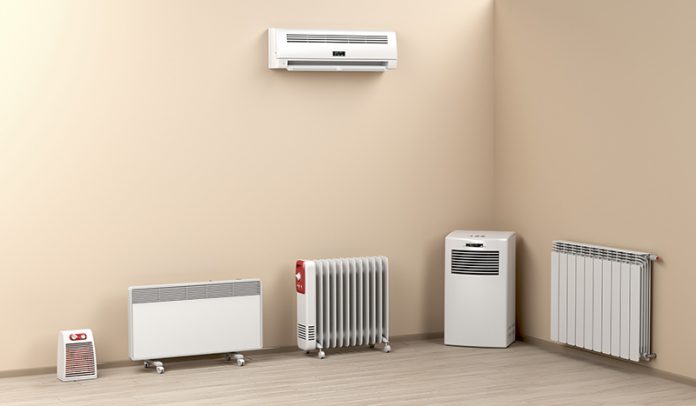There are six different types of air conditioners to use in the home and each one is designed for a different reason and space.
Central Air Conditioner
A central air conditioner system combines the compressor, condenser, and evaporator in a single unit placed on a concrete slab near the foundation or the roof. From the unit, there are ducts that run through the roof or exterior wall and draw air from inside the house and rerun the cooled air. This type of air conditioning system can also be combined with a natural gas furnace or heating coils.
Ductless Mini-Split System
This type of air conditioner is best for homes that don’t have ductwork. This system combines an outdoor condenser and compressor with more indoor air handling units. The units are attached to the wall and have blowers attached. There are tubes that connect the outdoor and indoor units and circulates refrigerant. Each room in the home will have a separate unit that cools that space, which is similar to a window unit. One of the best things about this type of system is that it can be installed without having to tear up walls. You only need a small outlet through the wall for the drain pipe and the coil. It also allows each room to be controlled independently. They can be more expensive if you are cooling the whole house but can be energy efficient if you only need certain spaces cooled.
Window Units
Window units are a common type of air conditioner for a single room. The components are enclosed in a single box and there is a single thermostat. The unit is made for a window sill or wall where it stays. Window units are a good choice for one room or if there are several connected rooms that don’t have any doors blocking air circulation.
Portable Units
Portable units are similar to window units but can easily be moved from room to room. They are self-contained and freestanding so you can place them on the floor or move from room to room. You only need a power outlet and a window to remove the exhaust.
Hybrid Air Conditioner
A hybrid system alternates between using electricity and burning fossil fuels in order to save energy and money while you run the system. During the summer, the heat pump works as normal and pulls heat from the home and distributes it outside. During the winter months, the hybrid heat system does the work in reverse to pull heat from the outside and distribute it in the home.
Geothermal Cooling and Heating
This is a newer method of cooling and heating. The geothermal technology extracts the heat from below the ground and transfers it to the home. It works when a geothermal coil is installed in the ground and is used to cool or heat the home. During the winter, heat is removed from the earth, and in the summer, heat is removed from the home and put back in the ground. It’s an energy-efficient and sustainable way to heat and cool the home and gives you a longer lifespan than the other options.
Determining What Types of Air Conditioners Are Best for Your Home
There are different things to consider when it comes to which types of air conditioners are the best fit for your home. You need to consider your budget. The cheaper option is portable or window AC, but this can be the least effective option, especially if you have a big space to cool. You should also consider the home’s square footage. You need a system that has the output capacity to cool your entire home. When comparing different air conditioners, you will also find the SEER rating, which is the Seasonal Energy Efficiency Ratio. This is a measurement of how much energy the system uses to cool the home. For those who live in humid or hot climates, the SEER rating should be at least 15. For those who have a lower SEER rating, upgrading can lower your energy costs. There are also energy-saving features you may want to look for, including thermal expansion values, two-stage cooling, an automatic fan delay switch, and variable speed motors.















